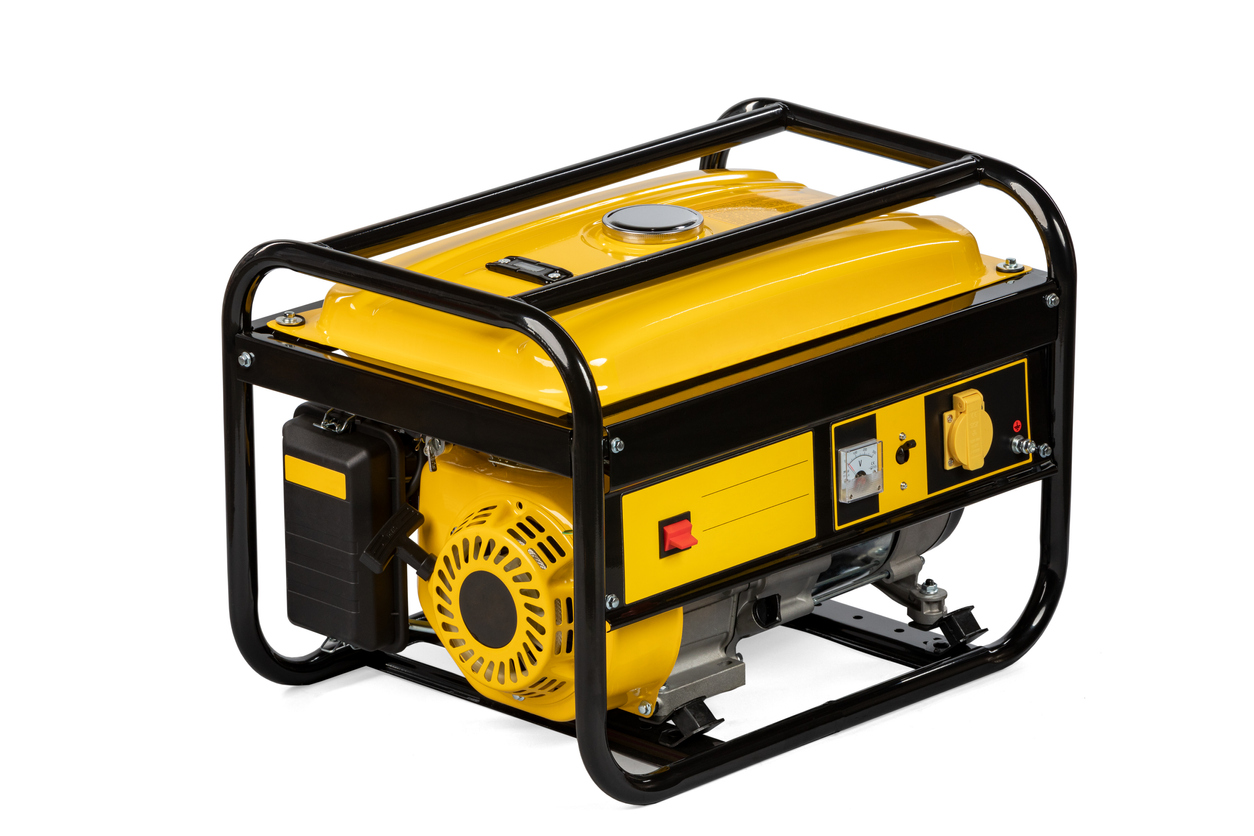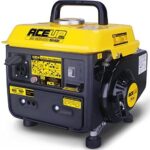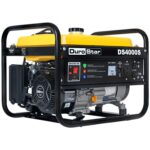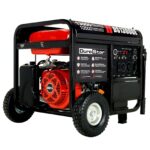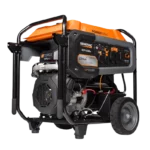Disclosure: Some of the links on this page are affiliate links. This means that, at zero cost to you, this website will earn an affiliate commission if you click through the link and finalize a purchase. This website, diysolarenergy.com, is a participant in the Amazon.com Services LLC Associates Program, an affiliate advertising program designed to provide a way for websites to earn advertising revenues by advertising and linking to Amazon.com.
Going Off-Grid With Solar Power and Backup Generators
More and more people are looking to go off-grid with solar power systems for their homes and properties. Using solar panels, charge controllers, inverters and batteries, you can generate your own electricity from sunlight and store it for use when the sun isn’t shining. This provides an independent and environmentally-friendly energy source. However, most off-grid solar systems also incorporate a backup generator as a secondary power source for times when solar and battery capacity is insufficient. In this article, we’ll look at why backup generators are important for off-grid solar systems and the different generator options available.
Why Do You Need a Backup Generator?
Solar panels and batteries provide the bulk of your energy needs in an off-grid solar system. However, there are certain situations where your solar/battery capacity may not meet your power requirements:
- Overcast weather – Solar panels produce less electricity on cloudy, rainy days. Your batteries may drain faster than they can recharge.
- Winter months – There are fewer daylight hours in winter to recharge batteries.
- Panels blocked by debris or snow reducing output.
- Equipment failure – If your solar panels or battery bank experience technical issues, you may have no power at all.
- High energy demand – Running large appliances or having additional guests can exceed your system’s capabilities.
A backup generator provides an alternate source of electricity generation for these scenarios. They can kick in automatically when your batteries reach a low state of charge. Generators supply AC power just like the grid so you can run lights, appliances, well pumps and anything else in your home without interruption. Having backup power gives you peace of mind that you’ll never be left in the dark.
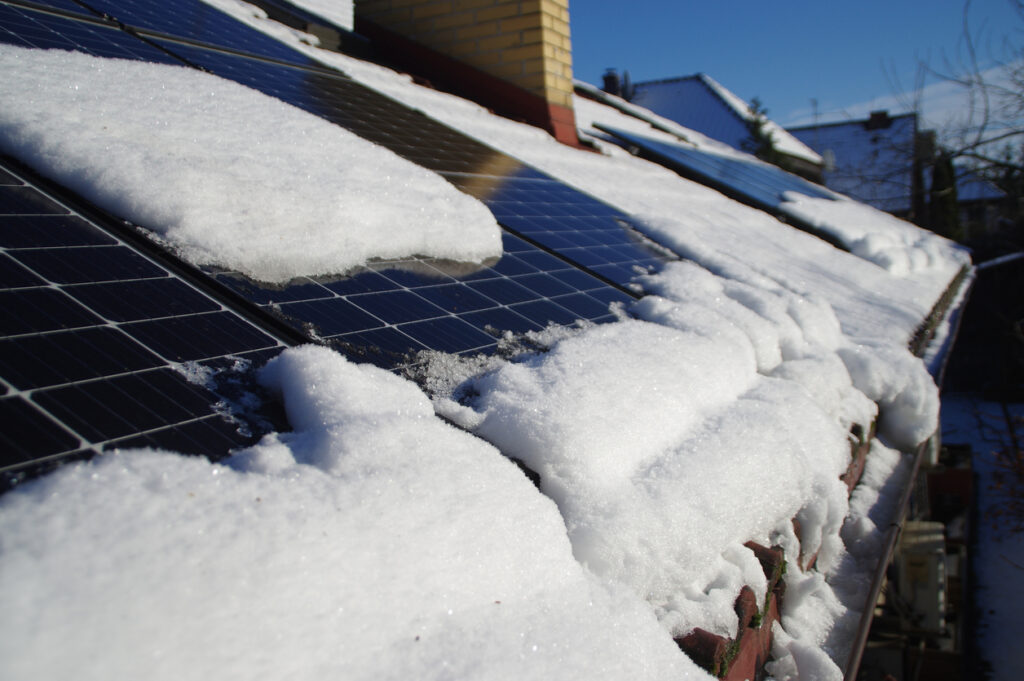
Types of Backup Generators
There are three main types of generators used for off-grid solar backup:
- Gas Generators – These run on gasoline. They are affordable and widely available. However, gas has a short shelf life so generators may require frequent refueling. Gasoline also needs proper handling and storage.
- Diesel Generators – Diesel generators are efficient, powerful and low maintenance. Diesel fuel has a long storage life. However, diesel generators are more expensive than gas and require more safety precautions.
- Dual Fuel Generators – As the name implies, dual fuel generators can operate on either gasoline or propane/natural gas. This provides flexibility in fuel choice. Propane has an indefinite shelf life. Dual fuel generators cost more upfront but offer the benefits of both gas and propane operation.
What is a “clone” Generator?
Historically, portable generators were mostly made by US and Japanese based small engine companies like Cummins, Briggs & Stratton, Honda, Yamaha, and Suburu.
Since 2000, China has become a major supplier of many “heavy industry” products like engines and generators. Many of these products are basically copies or “clones” of products made by Honda and Yamaha, since Chinese manufacturers often do not respect other companies’ patents or IP rights.
Most US brands now use Chinese made engines and generators in their products, including Briggs & Stratton, Champion, and Generac. In addition, there are literally dozens of these “clone” brands built in China and sold in the USA. So in reality today, almost everything except name-brand Japanese products is a clone.
One problem often encountered is that complex mechanical designs like carburetors are often not copied perfectly and clones sometimes do not work as well as the original product design. On the other hand, engines and alternators for AC generators are usually reliable.
The main reasons consumers should consider buying “name brands” instead of the cheaper “no-name” brands, are product quality and support. Name brands usually offer USA based warranties, parts availability (for longer periods), and dealers who will maintain these products. They also have more strict quality control and inspection of products.
There are two approaches to buying generators – either buy a name brand quality product and expect that it will have a long reliable service life and that support and parts will be available for years to come, or buy a much less expensive no-name clone and treat it as a disposable product to be easily replaced when it fails. Even warranty service may be an issue with a no-name brand.
With the second approach, reliability may be a bigger issue than support given the infrequent use of backup power generators. A generator is of little use if it fails when needed. Buyers should carefully check reviews for no-name generators before buying, and should test their units immediately upon purchase to identify any DOA or performance issues while in the seller’s free return window (often 30 days)
Another consideration given the size and weight of most generators is whether to purchase locally or online. A local purchase may be more expensive, but the ability to get seller support or to return locally for a refund without the hassle of packing and shipping may be important. Many building supply and hardware outlets will deliver locally.
What Size Generator Do I Need?
Portable generators are available in many sizes depending on your needs. From a 1000 watt breadbox sized unit for camping to a 10,000 or 15,000 watt monster for your home, generators come in all price ranges and capacities.
For example, an ultralight 800/1000 watt manual start gas generator sells for $149.00 plus tax. It weighs just 35 lbs.
For a more powerful option, a modern 3300/4000 watt manual start private label “clone” gas generator could cost as little as $279.00 plus tax. It will weigh 92 lbs.
On the other hand, a 10,500/13,000 watt electric start “clone” gas generator could cost $1,099.00 plus tax. It weighs 234 lbs.
Finally, for the best of the best, the Generac GP15500EFI is the top of the line in portable home generators. At 15,500/19,300 watts it is one of the most powerful portable gas generators available. It features less than 5% THD. With a list price of $3,999.00 plus tax, it will last for years. It has a 3 year residential warranty. Maintenance is available from authorized dealers all over the USA. It weighs 420 lbs.
Notice: These are US market examples only and are not based on Amazon current offerings or prices.
Key Generator Features for Off-Grid Solar
When selecting a backup generator for your off-grid solar system, look for these key features:
- Electric start – The generator should include a battery driven electric starter.
- Automatic start – The generator should start up automatically when battery voltage drops to a preset level. Manual start generators require constant monitoring.
- Quiet operation – Choose an inverter generator for quieter running or install the generator in an insulated enclosure away from living spaces.
- Sufficient wattage – Size your generator to handle your expected maximum load. Note that many generators are advertised for the maximum “start-up load” rather than their operating load. Under-sizing leads to overload and damage. Consider inductive loads like motors for wells and air conditioners separately.
- Voltage regulation – Fluctuating voltage can damage electronics and appliances. Quality generators provide stable, consistent output voltage and include a voltage regulator circuit.
- Power quality – check reviews and specifications to compare total harmonic distortion (THD) percentage to understand the quality of AC power output by a generator under various loads. A rating of 4-5% THD at 80% load is very good. However, many low cost portable generators can have a THD of 15-20% under high load. High THD can damage electronics and appliances. (The THD is a measurement of the harmonic distortion present in a signal. ) Note: Some systems only use the generator to charge the batteries using an AC to DC converter, and rely on the inverter to provide pure sine wave AC power for loads.
- Run time – make sure the generator will run for long enough on a single fueling to provide the power you need for charging batteries or supplemental powering of your home. Its no fun to get up in the middle of a cold wet winter night to refuel. Review tank capacity for gasoline and diesel units.
- Safety features – Consider a propane or diesel generator to avoid gasoline hazards. Other safety features include low-oil shutdown, circuit breakers and emergency stop switches. Many newer generators include carbon monoxide detectors for shutdown.
- Mobility – portable generators can be very heavy – especially larger wattage units. Consider how you will move the generator when needed – does it have wheels or just a frame?
- Weather protection – Your generator will be exposed to the elements. Ensure the unit is rated for outdoor operation or house it in a weatherproof enclosure.
Installing Your Off-Grid Generator
Proper generator installation is key to performance and safety. Here are some tips:
- Locate the generator on a flat, level surface away from living areas to reduce noise. Allow sufficient clearance for air flow and maintenance access.
- Insure that your generator location is outside any habitable structure and far away from living areas and any window, door, or ventilation openings to protect against carbon monoxide poisoning. NEVER operate a portable generator inside a building or garage.
- Feed the output through an approved automatic or manual transfer switch to safely transition loads between grid, solar/batteries and generator power and safely avoid back feeding power into utility or solar circuits.
- Use the specified gauge and length of cord to connect the generator to your off-grid system. Overly long or undersized cords cause voltage drop. Do not used frayed or damaged cords.
- Ground the generator to an earth ground when connecting to house wiring as recommended by the manufacturer.
- Use the correct amp rated output socket and plug to avoid overloading components.
- Install a dedicated circuit breaker on the generator connection for overload protection.
- For propane or diesel generators, comply with all codes and regulations in fuel storage and handling. Keep exhaust away from openings or air intakes.
- Break in the new generator as per the manufacturer’s recommendations. Initial run time helps seat components.
Types of Power Connections
Portable generators and solar power banks, recreational vehicles, and many large appliances sold for use in the USA use several standard types and ratings of AC power plugs and outlets. These connectors are designed for specific power loads and use cases.
They are referred to by NEMA (National Electrical Manufacturer Association) designations which specify their pin configuration, wiring, and amp rating. Each connector is also designed for a certain range of wire size and type. Only use approved adapters to prevent overloading cables or circuits. Adapters may be used to convert from a higher power or current (not voltage!) source to a lower power load, but NOT the reverse.
It is important to always use the correct connector and wire size to insure the safe operation of any AC generator or equipment.
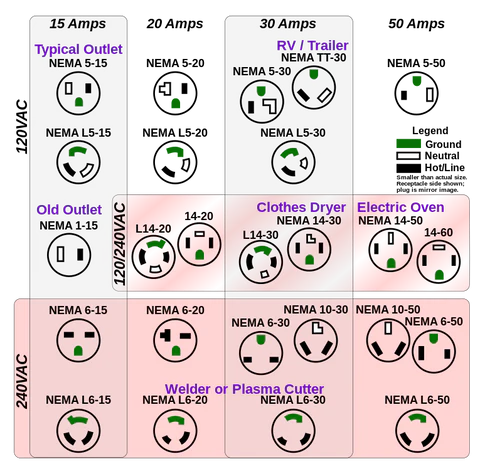
Common Problems
The most common problems with portable generators are related to infrequent use and lack of proper care of the equipment.
- Low oil is the number one issue with small generators. Lack of oil will kill your engine. Check the oil level each time you start the generator, and regularly during long periods of operation.
- Water or rust in the fuel system will cause poor running or failure to start in gasoline and diesel generators. Keep the fuel system dry and flushed regularly. Do not leave the generator outside exposed to weather.
- Bad fuel in the fuel system or carburetor will cause poor running or failure to start in gasoline generators. Empty the fuel in the carburetor bowl by turning off the fuel source before stopping the generator. You can also use fuel stabilizer for gasoline to prolong the shelf life of your fuel.
- Overloading the generator can harm the windings, voltage controller, or diodes. Never bypass the circuit breakers.
- Clogged carburetor jets or a stuck float valve from old fuel or debris can cause poor running or failure to start in gasoline generators.
- A clogged fuel filter in either the tank or fuel line can cause poor running or failure to start in gasoline and diesel generators.
- A clogged or missing air filter can cause poor running or failure to start. Also, lack of an air filter can allow ingestion of debris into the engine.
- Animal damage and debris from nesting or food storage can also cause serious issues, especially if ingested into the engine or alternator. Also, small rodents can chew on wiring and cause shorts or open connections.
- Corrosion of AC wiring or components (switches, outlets, or circuit breakers) can cause total or partial failure of power output. Always store your generator in a clean dry location.
- Charge the battery regularly for electric start generators, or use a trickle charger to maintain battery voltage so it is always ready to start.
Routine generator maintenance like oil changes, tune-ups and fuel stabilization is essential for longevity and performance. Test run your generator monthly to ensure proper operation.
Going off-grid with solar power and a backup generator provides energy independence and security. With the right generator setup, properly installed, you’ll have power on tap even when sunshine is scarce.
Amazon and the Amazon logo are trademarks of Amazon.com, Inc, or its affiliates. CERTAIN CONTENT THAT APPEARS ON THIS SITE COMES FROM AMAZON. THIS CONTENT IS PROVIDED ‘AS IS’ AND IS SUBJECT TO CHANGE OR REMOVAL AT ANY TIME.
Related Posts
- Beginner's Guide to DIY Solar Energy
Going Solar: A Beginner's Guide to DIY Solar Energy With climate change and rising energy…
- Solar Power Batteries Guide
For environmentally conscious homeowners looking to reduce their carbon footprint or those planning to live…
- Solar Panel Guide
Understanding Solar Panels: A Comprehensive Guide for New DIY UsersWith the increasing push for sustainable…

